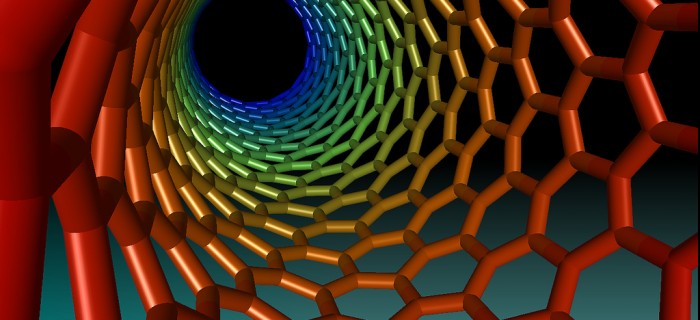Nanotechnology: Transforming Food and the Environment
Food First Backgrounder, Spring 2010, Vol. 16, No. 1
Nanotechnology is the latest technological innovation being used to transform food, farming and the environment. Nanotechnology breaks down and manipulates foods, seeds, chemical pesticides and food packaging at the micro-scale, and in so doing, is driving a nano-food and farming revolution (ETC Group, 2004; Friends of the Earth, 2008). While proponents of nanotechnology promise it will help address climate change and global hunger, opposition is mounting from civil society, unions and some of the world’s leading scientists, who point to ecological, health and socio-economic risks associated with nanotechnology (RS-RAE, 2004; Scrinis and Lyons, 2010). Given this controversy, it is striking that many nano products are already on the market, and most governments, including the U.S, have no nano specific regulations, testing or labeling requirements. What is nanotechnology? Nanotechnology is defined as any engineered materials, structures and systems that operate at a scale of 100 nanometers (nm) or less (one nanometer is one billionth of a meter) (Moraru et al., 2003). To put this scale into perspective, a strand of DNA is 2.5 nm wide, a red blood cell is 7000 nm, while a human hair is about 80,000 nm wide (Friends of the Earth, 2008).
A wide variety of nano-based products and processes are already on our plates, largely driven by the corporate sector, including Kraft Foods, H.J. Heinz, Nestle, Unilever, Cargill, Pepsi-Cola, Syngenta and Monsanto.
Nanotechnology is not a separate techno-scientific field, but rather a new platform for a range of existing disciplines—including chemistry, physics, biology, biotechnology, neurology, information technology and engineering—allowing a shift down to the nano scale (ETC Group, 2003). Nanotechnologies are being applied across a range of industries beyond food, including military and energy, pharmaceuticals, medicine, and cosmetics. Nano techniques include the manufacture of nanoparticles, nanofabrication, and nano-biotechnology techniques. Nanoparticles are produced by breaking down larger-scale chemical compounds and materials into nano-scale bits, as well as the manufacture of distinctly new materials, such as carbon nanotubes, buckyballs and quantum dots (Maynard, 2006). Nano-scale particles exhibit novel character traits (including different chemical reactivity, bioactivity and absorption capacity), compared to the same material in its bulk form (Hunt and Mehta, 2006). Silver, for example, demonstrates anti-bacterial and odor-eating qualities in its nano form (Senjen and Illuminato, 2009). Manufacturers have sought to harness these nano-scale characteristics; adding nano silver to refrigerators, chopping boards, and chopsticks; marketing these products as ‘safe, clean and hygienic.’ Despite the marketing hype around nano silver, its manufacture, use and disposal poses significant ecological, public health and social justice risks and concerns.


 Help Food First to continue growing an informed, transformative, and flourishing food movement.
Help Food First to continue growing an informed, transformative, and flourishing food movement.




